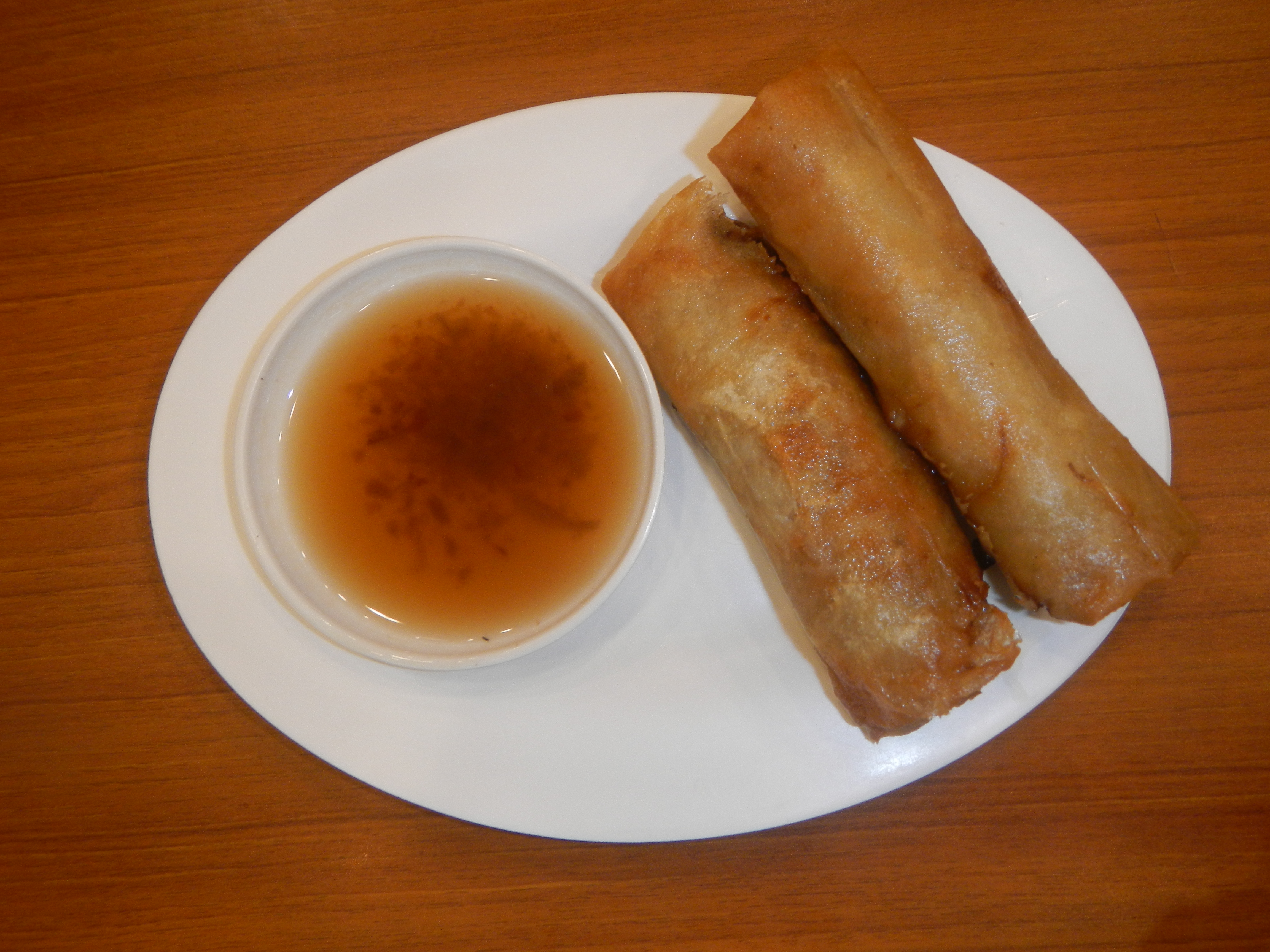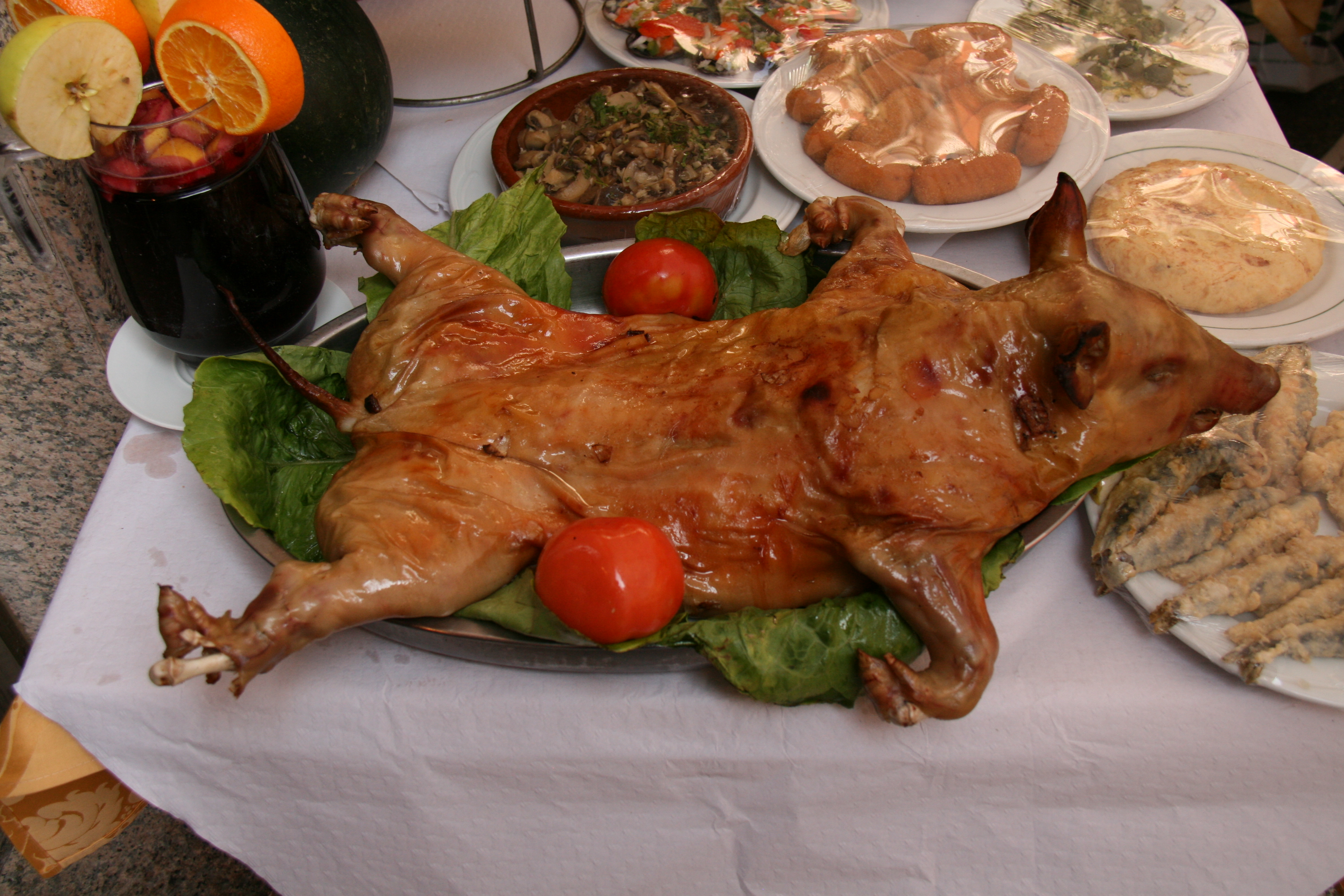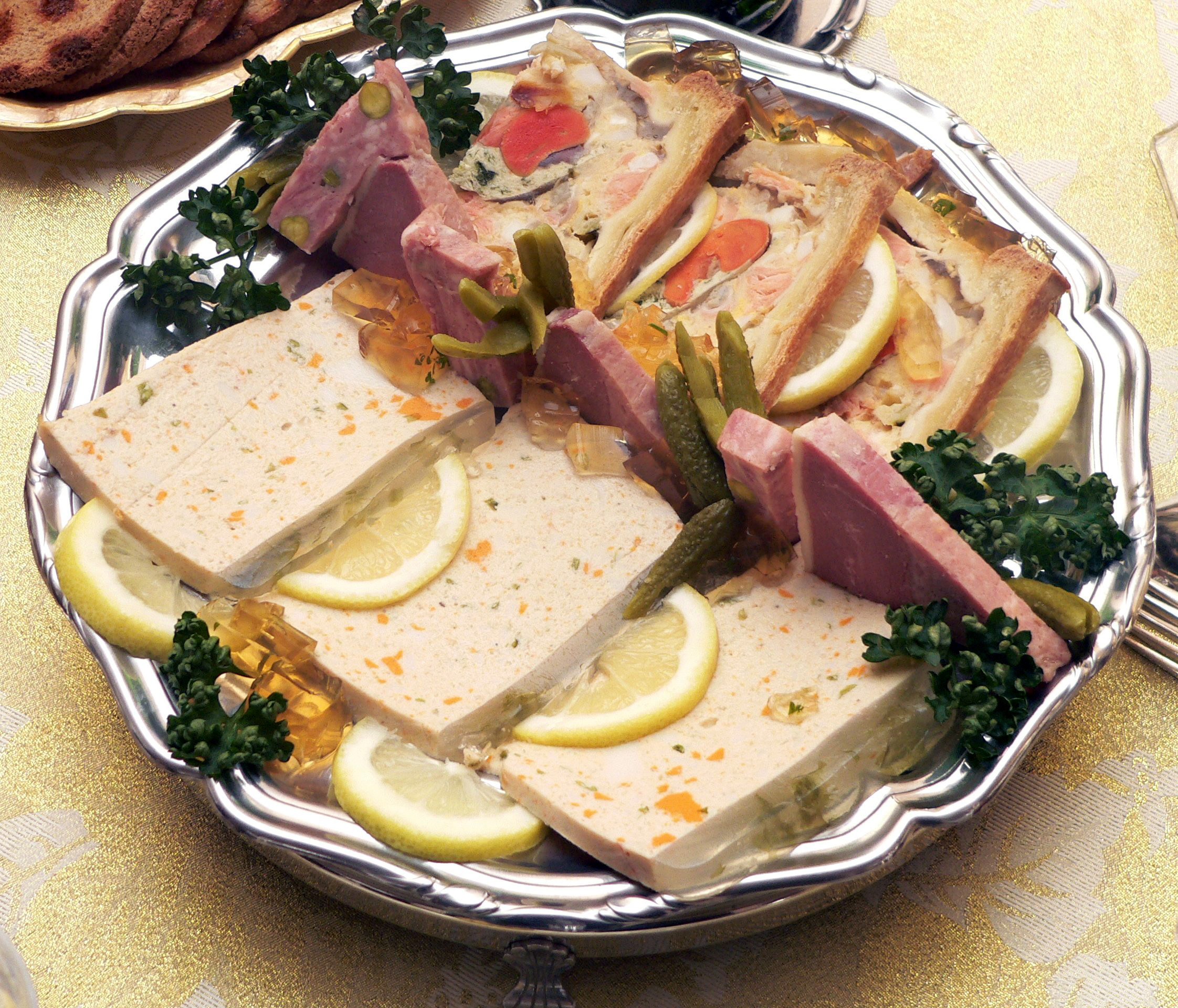|
Inihaw
Inihaw ( ), also known as sinugba or inasal, are various types of grilled or spit-roasted barbecue dishes from the Philippines. They are usually made from pork or chicken and are served on bamboo skewers or in small cubes with a soy sauce and vinegar-based dip. The term can also refer to any meat or seafood dish cooked and served in a similar way. Inihaw are commonly sold as street food and are eaten with white rice or rice cooked in coconut leaves (''pusô''). Inihaw is also commonly referred to as Filipino barbecue or (informally) Pinoy BBQ. Description Inihaw is a general term simply meaning "grilled" or "roasted" in Tagalog, from the verb ("to grill"). It is also known as ''sinugba'' (verb , "to grill") in Cebuano, and ''inasal'' (verb ''asal'', "to roast in dry heat, to skewer") in both Cebuano and Hiligaynon. It may also be referred to simply by the English name "barbecue" (usually shortened to "BBQ"), especially for inihaw served in skewers. In other languages of th ... [...More Info...] [...Related Items...] OR: [Wikipedia] [Google] [Baidu] |
Condiments Of The Philippines
The generic term for condiments in the Filipino cuisine is ''sawsawan'' (Philippine Spanish: ''sarsa''). Unlike sauces in other Southeast Asian regions, most ''sawsawan'' are not prepared beforehand, but are assembled on the table according to the preferences of the diner. Description In the Philippines, the common condiments aside from salt and pepper are vinegar, soy sauce, calamansi, and '' patis''. The combination and different regional variations of these simple sauces make up the various common dipping sauces in the region. The most common type of ''sawsawan'' is the '' toyomansi'' (or ''toyo't kalamansi''), which is a mixture of soy sauce, calamansi, and native Siling labuyo. It can also be seasoned with vinegar and '' patis'' (fish sauce). This sauce is typically served with roasted meat dishes. A similar dipping sauce used for grilled meats like ''inihaw'' is ''toyo, suka, at sili'' (literally "soy sauce, vinegar, and chili"). It is made of soy sauce, vinegar, and ''si ... [...More Info...] [...Related Items...] OR: [Wikipedia] [Google] [Baidu] |
Satti (food)
Satay ( , in the US also ), or sate in Indonesia, is a Javanese cuisine, Javanese dish of seasoned, skewered and grilled meat, served with a sauce. Satay originated in Java, but has spread throughout Indonesia, into Southeast Asia, Europe, America, and beyond. Indonesian satay is often served with peanut sauce and kecap manis – a sweet soy sauce, and is often accompanied with ketupat or lontong, a type of rice cake, though the diversity of the country has produced a wide variety of satay recipes. It is also popular in many other Southeast Asian countries including Brunei, Malaysia, Philippines, Singapore and Thailand. It also recognized and popular in Suriname and the Netherlands. In Sri Lanka, it has become a staple of the local diet as a result of the Sri Lankan Malays, influences from the local Malay community. Satay may consist of diced or sliced Chicken (food), chicken, goat, Lamb and mutton, mutton, beef, pork, Fish (food), fish, other meats, or tofu; bamboo skewer ... [...More Info...] [...Related Items...] OR: [Wikipedia] [Google] [Baidu] |
Pusô
''Pusô'' or ''tamu'', sometimes known in Philippine English as "hanging rice", is a Filipino cuisine, Filipino rice cake made by boiling rice in a Weaving, woven pouch of Arecaceae, palm leaves. It is most commonly found in octahedron, octahedral, diamond, or rectangular shapes, but it can also come in various other intricately woven complex forms. It is known under many different names throughout the Philippines with numerous variations, but it is usually associated with the street food cultures of the Visayan people, Visayan and Moro peoples. ''Pusô'' refers to the way of cooking and serving rice on woven leaves, and thus does not refer to a specific recipe. It can actually refer to many different ways of preparing rice, ranging from plain, to savory or sweet. Regardless, all of them are woven pouches where rice is poured inside and cooked by boiling. ''Pusô'' are differentiated from other leaf-wrapped Filipino dishes like ''Suman (food), suman'', ''binalot'', and ''pasti ... [...More Info...] [...Related Items...] OR: [Wikipedia] [Google] [Baidu] |
Grilling
Grilling is a form of cooking that involves heat applied to the surface of food, commonly from above, below or from the side. Grilling usually involves a significant amount of direct, radiant heat, and tends to be used for cooking meat and vegetables quickly. Food to be grilled is cooked on a grill (an open wire grid such as a gridiron with a heat source above or below), using a cast iron/frying pan, or a grill pan (similar to a frying pan, but with raised ridges to mimic the wires of an open grill). Heat transfer to the food when using a grill is primarily through thermal radiation. Heat transfer when using a grill pan or griddle is by direct conduction. In the United States, when the heat source for grilling comes from above, grilling is called broiling. In this case, the pan that holds the food is called a broiler pan, and heat transfer is through thermal radiation. Direct heat grilling can expose food to temperatures often in excess of . Grilled meat acquires a disti ... [...More Info...] [...Related Items...] OR: [Wikipedia] [Google] [Baidu] |
Lechon In The Philippines
A suckling pig is a piglet fed on its mother's milk (i.e., a piglet which is still a "suckling"). In culinary contexts, a suckling pig is slaughtered between the ages of two and six weeks. It is traditionally cooked whole, often roasted, in various cuisines. It is usually prepared for special occasions and gatherings. The most popular preparation can be found in Spain and Portugal under the name ''lechón'' (Spanish) or ''leitão'' (Portuguese). The meat from suckling pig is pale and tender and the cooked skin is crisp and can be used for pork rinds. The texture of the meat can be somewhat gelatinous due to the amount of collagen in a young pig. History Many ancient recipes for suckling pig survive from Roman and Chinese cuisine. Since the pig is one of the first animals domesticated by human beings for slaughter, many references to pigs are found in human culture. The suckling pig, specifically, appears in early texts such as the sixth-century Salic law. As an example of a ... [...More Info...] [...Related Items...] OR: [Wikipedia] [Google] [Baidu] |
Beef
Beef is the culinary name for meat from cattle (''Bos taurus''). Beef can be prepared in various ways; Cut of beef, cuts are often used for steak, which can be cooked to varying degrees of doneness, while trimmings are often Ground beef, ground or minced, as found in most hamburgers. Beef contains protein, iron, and vitamin B12. Along with other kinds of red meat, high consumption is associated with an increased risk of colorectal cancer and coronary heart disease, especially when processed meat, processed. Beef has a high Environmental impact of meat production, environmental impact, being a primary driver of deforestation with the highest greenhouse gas emissions of any agricultural product. In prehistoric times, humans hunted aurochs and later domesticated them. Since that time, numerous beef cattle, breeds of cattle have been Selective breeding, bred specifically for the quality or quantity of their meat. Today, beef is the third most widely consumed meat in the world, aft ... [...More Info...] [...Related Items...] OR: [Wikipedia] [Google] [Baidu] |
Kapampangan Language
Kapampangan, Capampáñgan, or Pampangan, is an Austronesian language, and one of the eight major languages of the Philippines. It is the primary and predominant language of the entire province of Pampanga and southern Tarlac, on the southern part of Luzon's central plains geographic region, where the Kapampangan ethnic group resides. Kapampangan is also spoken in northeastern Bataan, as well as in the provinces of Bulacan, Nueva Ecija, and Zambales that border Pampanga. It is further spoken as a second language by a few Aeta groups in the southern part of Central Luzon. The language is known honorifically as ('breastfed, or nurtured, language'). Kapampangan is assigned the ISO 639-2 three-letter code pam, but not an ISO 639-1 two-letter code. Classification Kapampangan is one of the Central Luzon languages of the Austronesian language family. Its closest relatives are the Sambalic languages of Zambales province and the Bolinao language spoken in the towns of Bolinao a ... [...More Info...] [...Related Items...] OR: [Wikipedia] [Google] [Baidu] |
Ilocano Language
Iloco (also Iloko, Ilocáno or Ilokáno; ; Iloco: ) is an Austronesian languages, Austronesian language primarily spoken in the Philippines by the Ilocano people. It is one of the eight major languages of the Philippines with about 11 million speakers and ranks as the third most widely spoken native language. Iloco serves as a regional lingua franca and second language among Filipinos in Northern Luzon, particularly among the Igorot people, Cordilleran (Igorot) ethnolinguistic groups, as well as in parts of Cagayan Valley and some areas of Central Luzon. As an Austronesian languages, Austronesian language, Iloco or Ilocano shares linguistic ties with other Philippine languages and is related to languages such as Indonesian language, Indonesian, Malay language, Malay, Tetum language, Tetum, Chamorro language, Chamorro, Fijian language, Fijian, Māori language, Māori, Hawaiian language, Hawaiian, Samoan language, Samoan, Tahitian language, Tahitian, Paiwan language, Paiwan, and ... [...More Info...] [...Related Items...] OR: [Wikipedia] [Google] [Baidu] |
Pangasinense Language
Pangasinan (''Pangasinense'') is an Austronesian language, and one of the eight major languages of the Philippines. It is the primary and predominant language of the entire province of Pangasinan and northern Tarlac, on the northern part of Luzon's central plains geographic region, most of whom belong to the Pangasinan ethnic group. Pangasinan is also spoken in southwestern La Union, as well as in the municipalities of Benguet, Nueva Vizcaya, Nueva Ecija, and Zambales that border Pangasinan. A few Aeta groups and most Sambal in Central Luzon's northern part also understand and even speak Pangasinan as well. Classification The Pangasinan language belongs to the Malayo-Polynesian languages branch of the Austronesian languages family. Pangasinan is similar to other closely related Philippine languages, Malay in Malaysia (as Malaysian), Indonesia (as Indonesian), Brunei, and Singapore, Hawaiian in Hawaii, Māori in New Zealand, and Malagasy in Madagascar. The Pangasinan lan ... [...More Info...] [...Related Items...] OR: [Wikipedia] [Google] [Baidu] |
Offal
Offal (), also called variety meats, pluck or organ meats, is the internal organ (anatomy), organs of a butchered animal. Offal may also refer to the by-products of Milling (grinding), milled grains, such as corn or wheat. Some cultures strongly consider offal consumption to be taboo, while others use it as part of their everyday food, such as lunch meats, or, in many instances, as Delicacy, delicacies. Certain offal dishes—including ''foie gras'' and ''pâté''—are often regarded as gourmet food in the culinary arts. Others remain part of traditional regional cuisine and are consumed especially during holidays; some examples are sweetbread, Jewish chopped liver, Scottish haggis, U.S. chitterlings, and Mexican Menudo (soup), menudo. On the other hand, intestines are traditionally used as casing for sausages. Depending on the context, ''offal'' may refer only to those parts of an animal carcass discarded after butchering or skinning; offal not used directly for human or anim ... [...More Info...] [...Related Items...] OR: [Wikipedia] [Google] [Baidu] |







